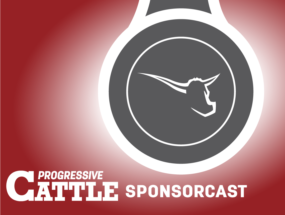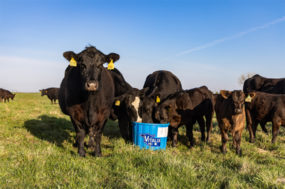Johne’s disease is often thought of as a dairy problem. In fact, beef producers also need to be vigilant to prevent the spread of this destructive, chronic disease.
Discovered by German scientist Heinrich Johne in 1905, Johne’s disease is caused by a bacteria similar to the strains that cause tuberculosis (TB) in both humans and cattle. One major difference in this bacteria is that it is slow-growing, which is why many infected cattle do not show symptoms of Johne’s disease for years.
Unfortunately, many cattle that show symptoms of Johne’s disease will eventually succumb to it.
Michael Collins of the University of Wisconsin – Madison says that a cow in later stages of Johne’s disease has particular symptoms.
“A Johne’s cow doesn’t act sick,” says Collins. Instead, the animal will eat and have a normal diet but continue to lose weight.
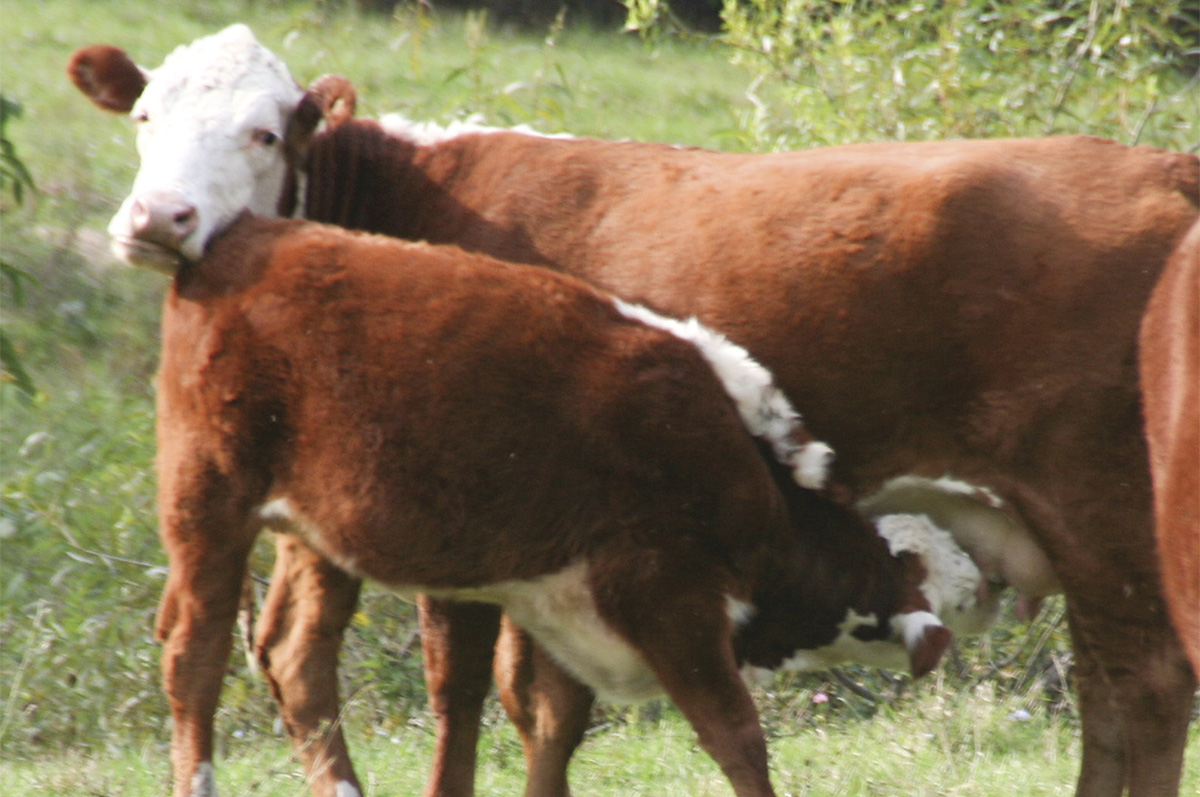
Cattle are usually infected with Johne’s disease within a few months of birth. Photo courtesy of Johne’s Information Center.
Collins, along with other experts, created the Johne’s Information Center at the University of Wisconsin – Madison. The center’s website describes how Johne’s disease affects cattle and how producers might prevent Johne’s disease or reduce its destruction.
Johne’s disease causes thickening of tissue in the small intestine, preventing adequate absorption of nutrients. This is why cattle infected with the disease eat normally while losing weight.
While the USDA has found that roughly 90% of dairy herds in the U.S. have some Johne’s disease-infected animals, Collins states that 5% to 10% of commercial beef herds have infected animals. He also notes that producers who show cattle and sell breeding stock – producers who often buy and sell cattle – likely have a higher rate of infection. Collins believes that 20% to 25% of beef herds that regularly buy cattle may have some infected animals.
On the ground, Johne’s disease often affects beef cattle differently than it does dairy cattle.
“Beef cattle are not working so hard,” says Collins, explaining that the work of raising a single calf doesn’t put as much stress on a cow as producing enormous quantities of milk each day does. Less stress means that the Johne’s disease-infected beef cow may be able to maintain good flesh and never become symptomatic.
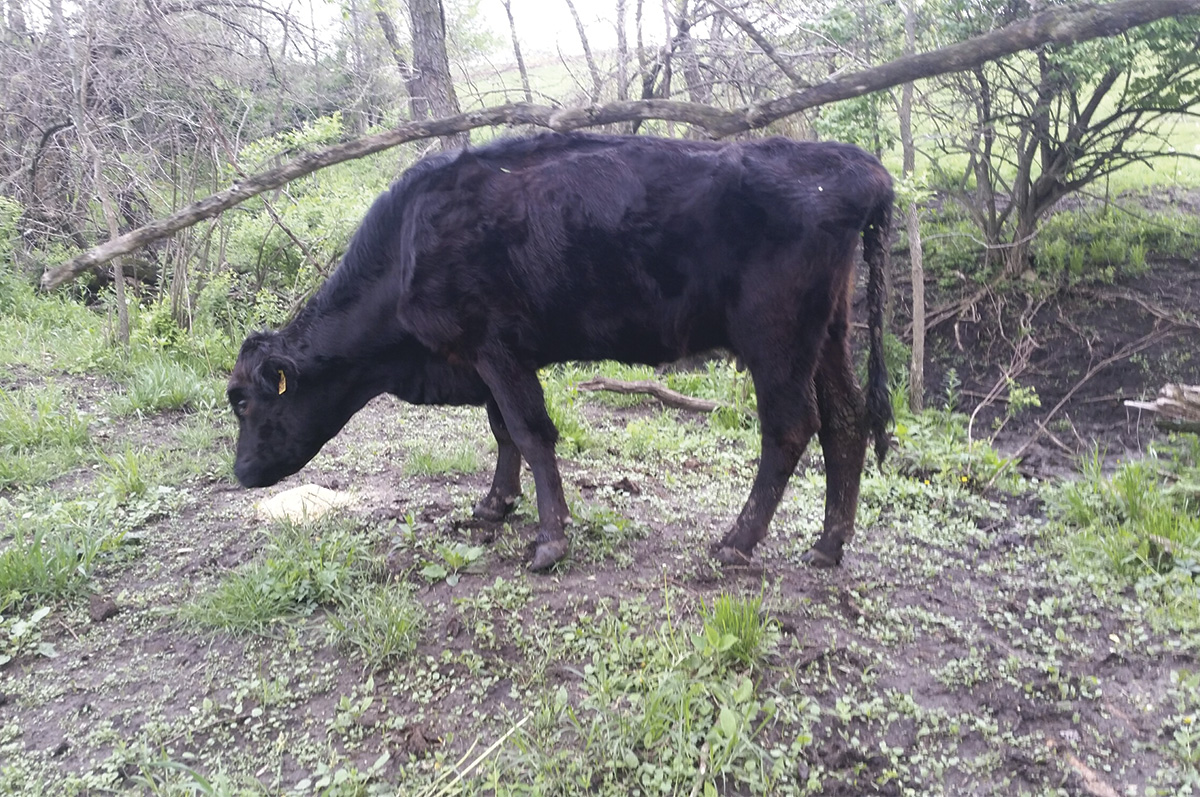
Cattle with Johne’s disease lack thrift and lose weight despite a good appetite. Photo courtesy of Johne's Information Center.
Johne’s disease often follows a long series of stages. In the first stage, a calf is infected, either before birth or by consuming bacteria when nursing. Usually, an infected animal does not show symptoms for two years or more. Some animals go on to be carriers and never show symptoms. Some animals begin to lose weight but maintain appetite. In the final stage, cattle often become very weak and develop a lump on the throat, and eventually die.
There is no effective treatment for Johne’s disease. Although some antibiotics show some effectiveness in treating the disease, they are not approved for food-producing animals, so all beef produced from treated animals would have to be discarded. The Johne’s Information Center states that a vaccine called Mycopar has been developed for Johne’s disease. However, there are many problems with the vaccine. Animals vaccinated with Mycopar test positive for bovine tuberculosis, which would cause problems with controlling TB in cattle. Some USDA-conducted studies have also shown that the vaccine is relatively ineffective in decreasing the progress of the disease, according to the Johne’s Information Center.
So what can producers do?
Barry Whitworth, food and animal health quality specialist at Oklahoma State University, says that having a biosecurity system in place is the first step. Noting that testing an entire herd multiple times (which is what it might take to really eliminate Johne’s disease from a herd) is quite expensive; he recommends testing new animals before bringing them into a herd.
Whitworth agrees that Johne’s disease is not as common in beef herds as in dairy herds. However, he says, “It’s been going up.” He has noticed that producers often do not act on a disease until they feel its repercussions. “Until you have an incentive to control a disease, it’s hard to get producers involved.”
Sanitation is a simple and relatively inexpensive way to fight Johne’s disease, according to Whitworth. Because cattle generally are infected in the first months of life through contact with infected manure, spreading out hay in different, clean areas may help prevent spread of the disease.
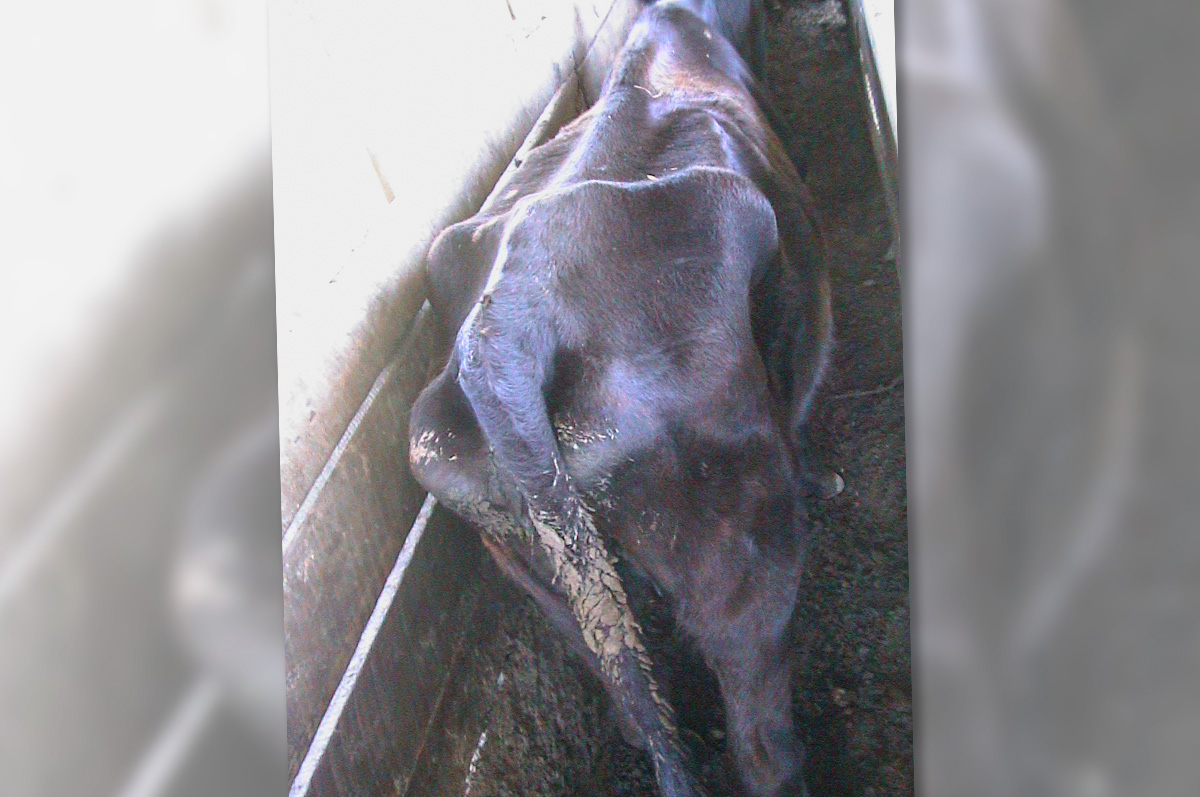
Johne’s disease has a severe impact on cow body condition because it prevents the body from absorbing nutrients. Photo courtesy of Johne’s Information Center.
“You want to try to reduce manure ingestion,” says Whitworth.
Gary Stone is the field veterinarian at the Oklahoma Department of Agriculture, Food and Forestry. Stone says that the uptick of Johne’s disease in recent years may have come about because of some mistakes made associated with embryo transfers. For example, when some producers were looking for good mothers to carry expensive embryo transfers, they used cull dairy cows, inadvertently increasing the presence of Johne’s disease in various beef herds. Stone also notes that the quick turnaround time in some beef herds – when the animals are sold or slaughtered before they have time to show symptoms of slow-developing Johne’s disease – means that it is hard to tell exactly how many herds are infected.
“We need to develop some guidelines for identifying that birth mother,” says Stone. “We need to keep that cow for a long time.”
Stone focuses on informing producers about Johne’s disease, answering any questions they have about the disease and eliminating the disease if that’s what the producer wants. Eliminating the disease in a herd comes down to testing, sometimes multiple times, and culling cattle.
“We need to have the approach that healthy food comes from healthy animals,” says Stone. “Cows with Johne’s are certainly not healthy.”
Another key issue associated with the disease is the possibility of transfer to humans. Although the science is inconclusive, some studies indicate that Crohn’s disease in humans (an inflammatory bowel disease) has an association with exposure to Johne’s disease in cattle.
“Probably some of the humans who have Crohn’s had some connection to Johne’s,” Stone says.
Taryn Pearson, assistant state veterinarian in Maine, emphasizes that Johne’s disease can be spread in a multitude of ways: tractor buckets, boots, various types of equipment. “Anything that was used to spread manure can spread it,” he says.
Like other experts, Pearson emphasizes the need for more education on the disease. “Producer understanding is poor,” she says.
No producer wants to see sick cattle. Although Johne’s disease is a serious, chronic and fatal disease in cattle, experts like Collins, Pearson, Whitworth and Stone are working hard to ensure that producers and their cattle have options. Your local state veterinarian and extension service have more information about how to initiate testing.










